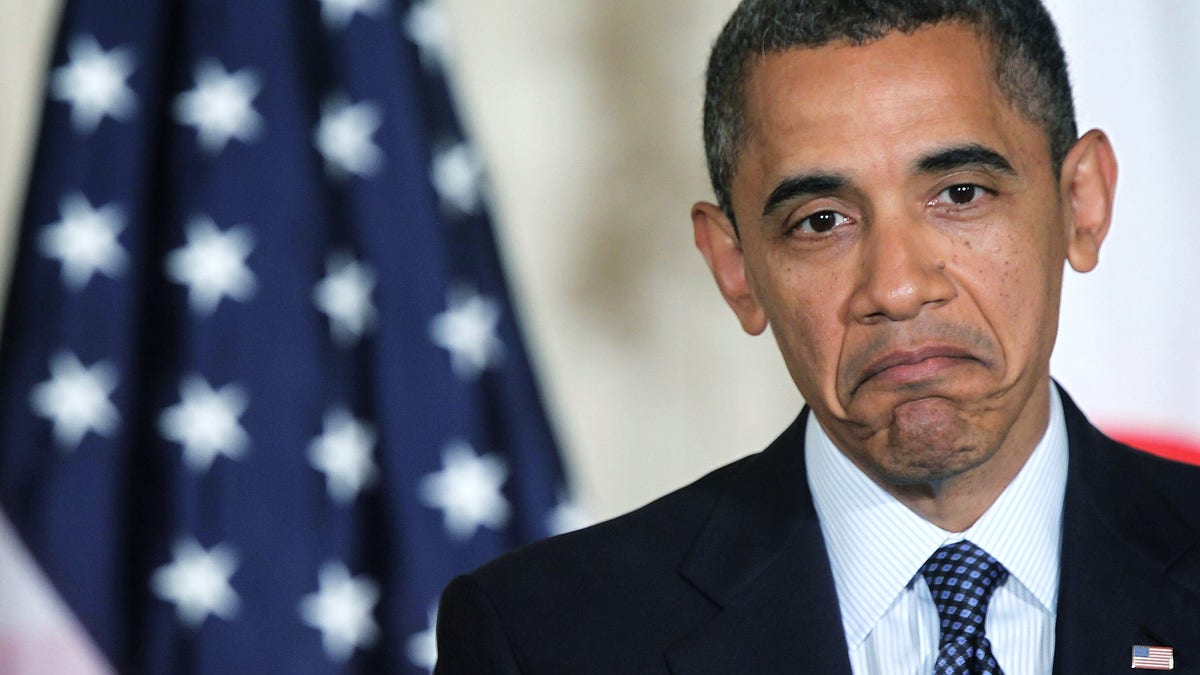
U.S. President Barack Obama during a news conference with Japanese Prime Minister Yoshihiko Noda at the East Room of the White House April 30, 2012 in Washington, DC. (Photo: by Alex Wong/Getty Images) (2012 Getty Images)
The federal budget deficit will fall to a six-year “low” of $468 billion in 2015, before resuming an upward climb that will take the federal debt to record heights.
The numbers are the latest from the Congressional Budget Office, which had predicted a somewhat larger 2015 deficit of $483 billion. The 2008 financial crisis led to the highest deficit as a percentage of the economy on record since World War II — in 2009 it was $1.4 trillion.
It is now closer to 2 percent of GDP, and is expected to remain relatively low through 2018. But rising health care costs, the implementation of Obamacare and an aging population are expected to drive a massive surge in spending over the next 25 years that will cause the deficit and debt to rise.
The growing annual deficits, which are the differences between spending and revenue, will stack up over time, adding $9.5 trillion to the total federal debt by the end of the decade.
“Such large and growing federal debt would have serious negative consequences,” the report states.
Currently, the federal debt is about 74 percent of GDP — two and a half times the average since World War II, when the debt briefly surged. By 2039 the CBO projects it will reach 106 percent of GDP and keep climbing.
Federal spending on Social Security, Medicare, Medicaid and CHIP and on interest payments to the debt is projected to consume 100 percent of tax revenue by 2030. And in 2039 it will reach 18 percent of GDP, while spending on everything else declines to 7 percent of GDP.
House Budget Chairman Tom Price said the report is a “sober reminder” of the country’s economic difficulties. “This ‘new normal’ is unacceptable,” he said in a statement.
The Senate Budget Committee’s ranking member, Bernie Sanders, said the numbers don’t tell the whole story. “While we must continue to focus on the federal deficit, we must also be aware that there are other deficits in our society that have been causing horrendous pain for the vast majority of the American people,” he said, mentioning “deficits” in income, equality and education.




